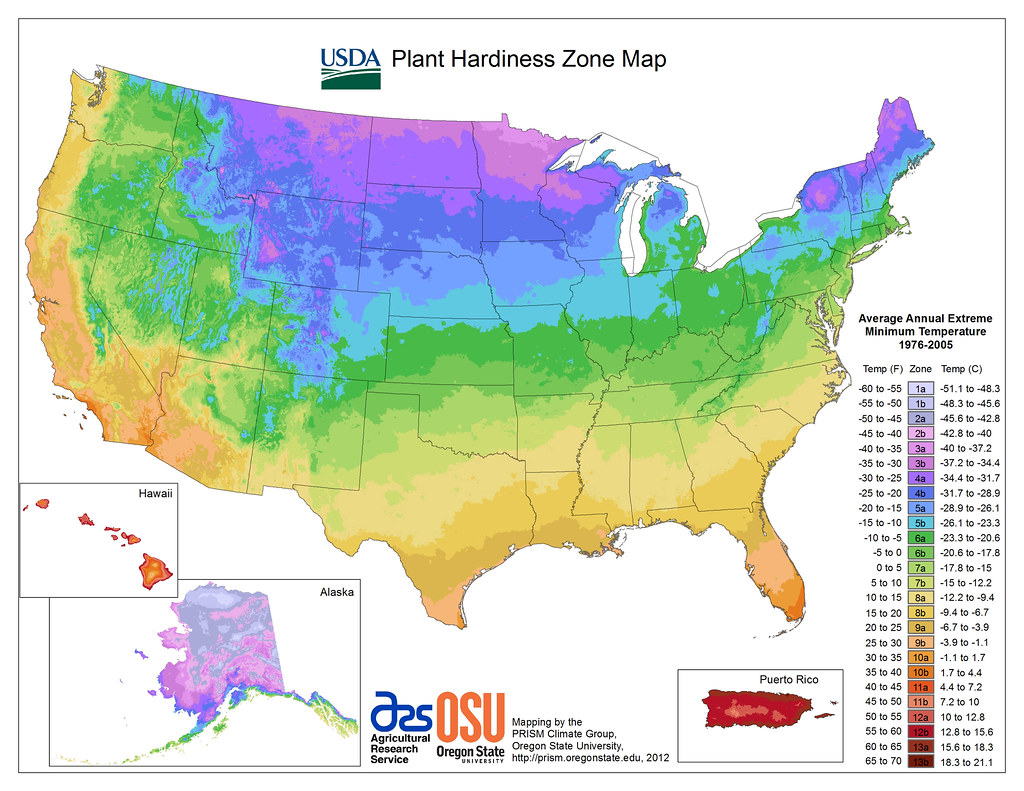I spent 1999 to 2007 living in Phoenix, Arizona which is Zone 10A. In the summer roasting in 110F, I missed living in Maine. As I sit here in Northern Maine Zone 4 during a snowstorm at the beginning of March, I miss the warmth of the winters there, which is the equivalent of the summers here. There is a trade-off in temperature ranges no matter where you live. Gardening in Zone 4 is not easy, but if you start your veggies indoors you can add a little bit extra time to your growing season and that may be all the difference you need between an okay harvest and a full harvest.
It’s a common belief that hardiness zone 4 can only grow cold weather crops. That is, cold weather crops along with lots of weeds that act as companion crops. While the cold weather crops do thrive here, with a little bit of planning and preparation you can grow a much larger variety of plants in your vegitable garden. As for perennial food forests, you might be able to build a few microclimates that extend your zones out a bit, but it is always a roll of the dice that an exceptionally cold winter might kill the zone 5 or 6 plants you rolled the dice on. I’ll be touching on food forests in other blog posts later on.
Zone 4 is home to many options of fruits, flowering annuals, perennials, herbs, rhizomes, cereal grains, vegetables, and other plants that are both friendly with and negatively affected by frost. In this article, we’ll cover some of the cold-hardy plants that thrive in Zone 4.
Gardening in Cold Climates
You’ve determined that you live in Zone 4 according to the USDA, but maybe you really don’t know what that means. Each Zone is separated from the next by 10-degree differences. The range is based on the previous 30 Year’s average coldest winter temp. Zone 4 is -20 to -30 F, while its neighbors Zone 5 is -10 to -20 F and Zone 3 is -30 to -40 F. This Zone designation gives you a probable range of plant survival based on temperatures, not a guarantee they will survive.
There are things you can do to improve the probability of success for your plants in cold climates. We utilize a glass-enclosed porch as a makeshift greenhouse in early spring, soon we’ll be adding a real greenhouse to get an even earlier start outside. Raised beds are another great way to help your plants thrive.
Take an inventory of your land and see what is around where you plan to plant your garden or food forest. Look for places of shade and wide-open areas for plants that need full sun. Adapt planting strategies that work with your environment. An example of this is the differences between planting crops north to south, versus east to west. Cold climates go north to south (or south to north) so plants don’t shade each other, you want maximum sunlight to hit them. In the south with the scorching summers, you would go east to west so maximum shade is given to other plants.
Plants for Cold Climates
Keep a journal of what you plant on your land (land could be a container in your apartment if that is what you have to work with). Detailed records of your garden activities are a must. It helps you determine what works for your specific site and the mistakes that show what doesn’t work. We learn so much more from the things that don’t work, but keeping track of the success and failures will help you keep track of what works for you.
When you are first starting out, you have a blank journal. You have nothing to go by for past experiences. Without doing the proper research for your zone, you will pick the wrong plants for cold climates. If you live in Maine and you try to plant some of your favorite Ghost Pepper plants, you need to realize that they take 100 to 150 days and your growing season from roughly June 1st to Oct 1st is not long enough if it’s not on the shorter end of that range. Starting the seedlings indoors changes the calculus on that, but if you don’t know, it’s a potential mistake waiting to happen.



